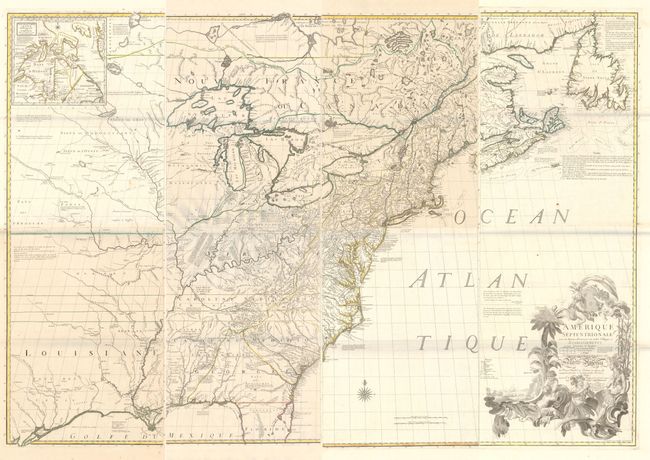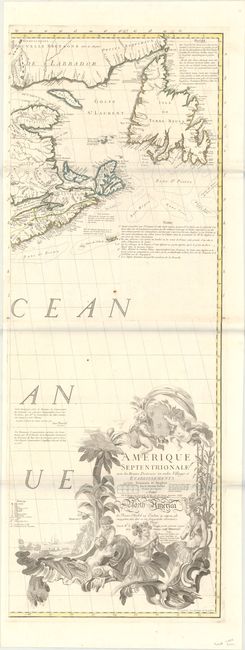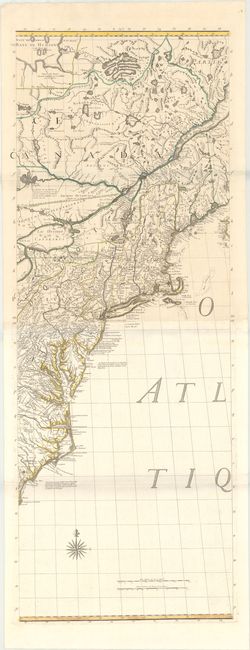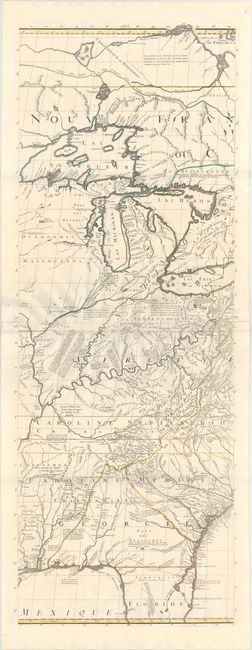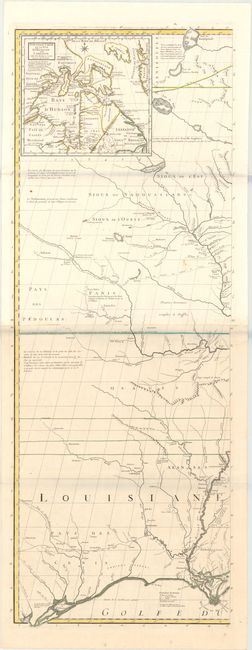Catalog Archive


Auction 168, Lot 134
Third French Edition of Mitchell's Monumental Map
"[On 8 Sheets] Amerique Septentrionale avec les Routes, Distances en Miles, Villages et Etablissements... / North America...", Mitchell/Le Rouge
Subject: Colonial Eastern United States & Canada
Period: 1777 (dated)
Publication: Atlas General
Color: Hand Color
Size:
19 x 53 inches
48.3 x 134.6 cm
Download High Resolution Image
(or just click on image to launch the Zoom viewer)
(or just click on image to launch the Zoom viewer)
